In the 8 years I’ve worked on and analyzed North Carolina campaigns, I’ve seen how legislative candidates run their campaigns wildly differently. Campaigns can range from tooth-and-nail battles where candidates and volunteers knock on doors every week and have ads constantly running on every media you can afford to campaigns as simple as handing out fliers at your local Walmart.
Part of this depends on the region in which you live in North Carolina. For instance, in the mountains and more rural areas, door-knocking is a difficult and impractical process. While geography can play a role, so can the competitiveness of the district.
I recently discussed how much money political parties and legislative candidates raised in the 2024 election cycle. On the surface, these two articles appear to contradict each other. Legislative candidates are the most significant source of income for both parties, yet parties are the largest source of income for all Senate candidates and the second largest for the House.
This is because political parties can act as financial intermediaries between different candidates of the same political party. While contribution limits exist for candidate-to-candidate transfers, these rules do not apply to party committees. By acting as middlemen, caucuses and parties can move money raised by candidates with better fundraising skills or those in safer districts into the more competitive seats.
This can best be seen for Democrats in the more than $13 million now Gov. Josh Stein transferred to the state Democratic party. For Republicans, this is best shown by the chamber leadership, where Speaker Destin Hall and President Pro Tempore Phil Berger collectively transferred over $4.5 million to other committees.
When combining all the expenses reported by legislative candidates in the 2024 general election, more than $77.4 million was reportedly spent in this year’s legislative election just from candidates. This only factors in candidates for both major parties who submitted digital reports; several failed to submit any reports entirely.
(Click the links to view spreadsheets on each House and Senate candidate’s expenditures and cost per vote).
Legislative Seats Cost-Per-Vote
The 2024 election had several candidates with expenditures exceeding $3 million, with Wake County Senator Terrance Everitt (D) spending over $4 million in his election bid. Everitt and his opponent for Senate 18, Ashlee Adams (R), led the Senate in cost per vote, reaching a staggering $68.80 and $59.35, respectively.
While no candidates in the North Carolina House report expenditures higher than $2 million when excluding Hall, the State House saw the highest cost per vote in House District 24. The district made up of Wilson County with a dash of Nash County, was won by Dante Pittman (D) with a cost per vote of $82.34.
While Pittman and Everitt were in competitive seats, it’s important to note that cost-per-vote analysis can be somewhat misleading as it just divides the flat expenditure by the number of votes received. By calculating it in this manner, you fail to account for transferring funds to parties, repayments of loans, and other expenditures unrelated to the money a candidate spent to win their election.
Not excluding transfers and loan repayments misrepresents what was needed to win each candidate’s respective seat. When removing these types of expenditures, Speaker Hall’s race moves from $71.34 per vote to $12.08.
This model slightly lowers Pittman and Everitt’s cost per vote to $76.57 and $68.26, respectively.
While this does create a more accurate picture of the election, it can still be subject to human error depending on how candidates record their donations to their party’s caucuses. For example, Senator Todd Johnson (R) reported a $451,000.00 in contribution to the caucus as an operating expenditure rather than a transfer to another committee, ballooning his supposed cost-per-vote significantly.
Can parties keep up with the growing costs of legislative races?
With North Carolina a target state for the US Senate majority in 2026, there is no doubt that money will flow into North Carolina. The question will be if the Senate race will take all the oxygen out of the room and lead to leaner campaign spending for legislative races in the next election.
To keep up with the proverbial arms race, both parties will lean on their largest fundraisers to help fund competitive districts. For Democrats, this will be a question of whether Stein can raise money during an off-year election. One thing is sure: expensive and highly competitive urban seats will make or break supermajorities in both chambers.
